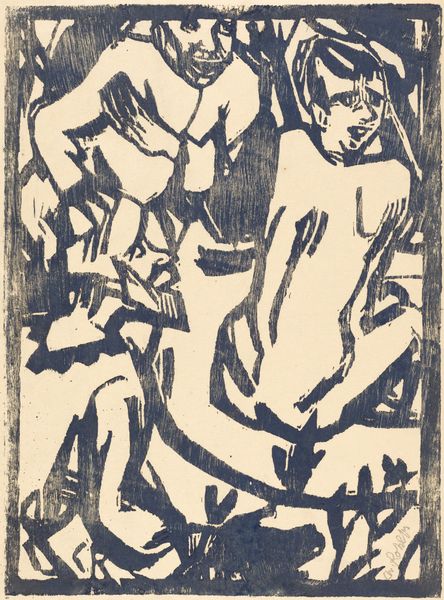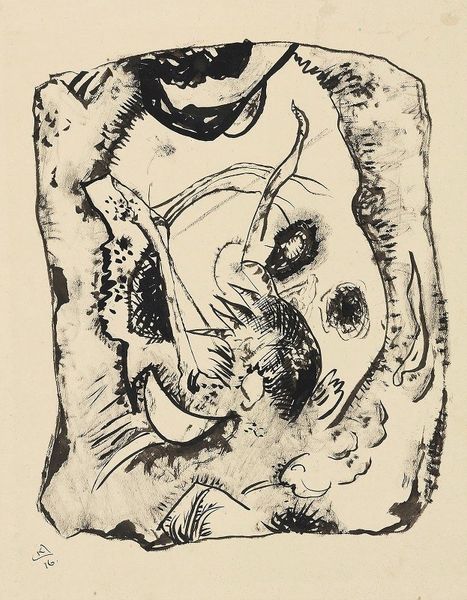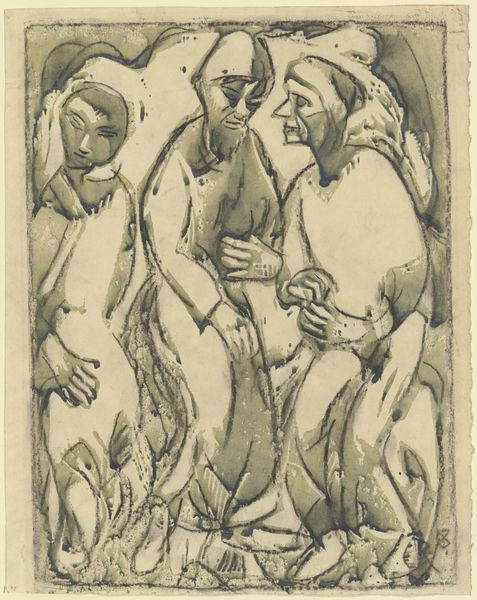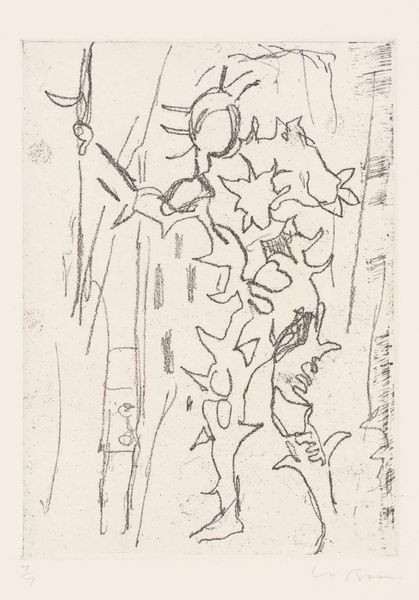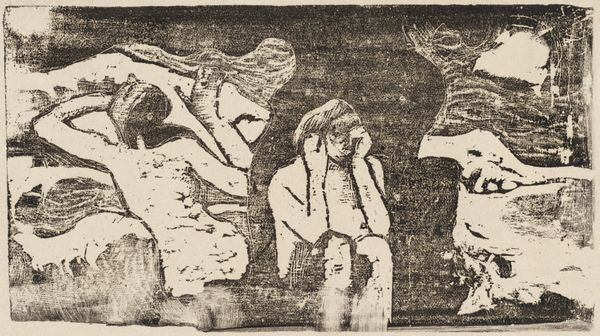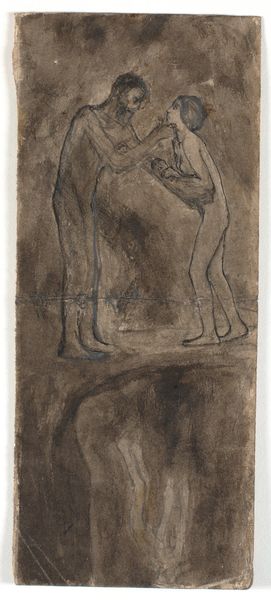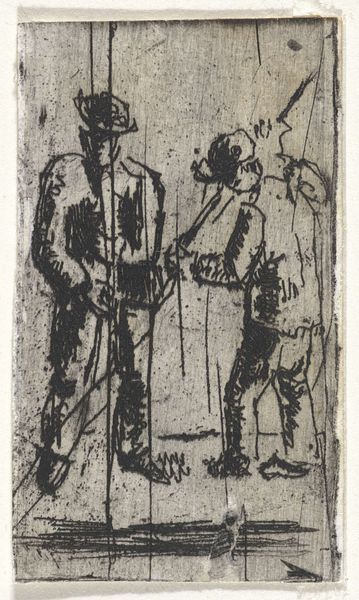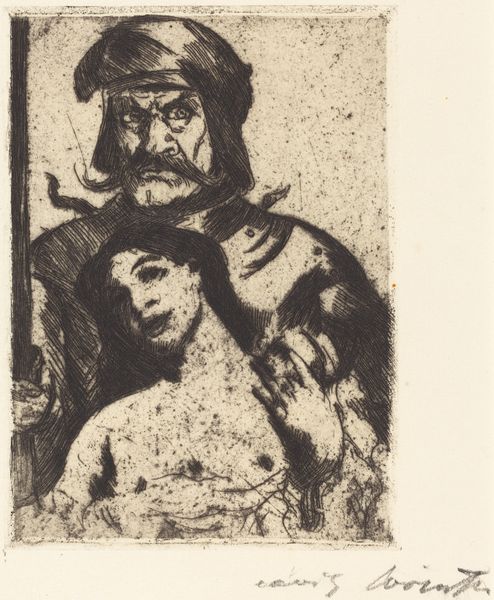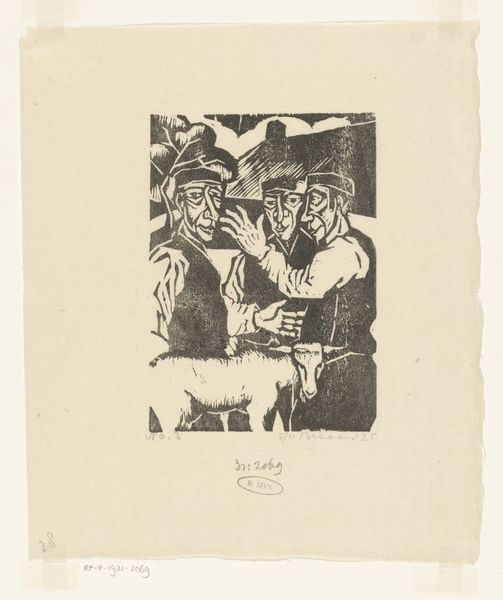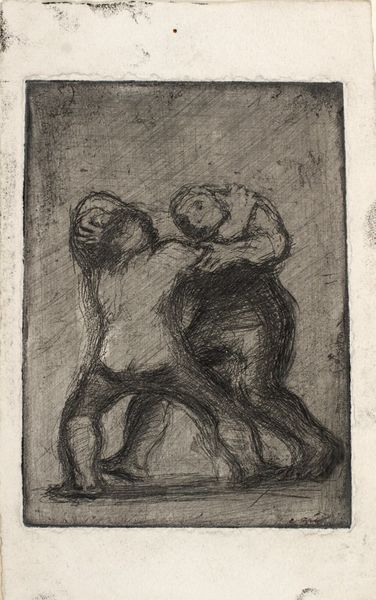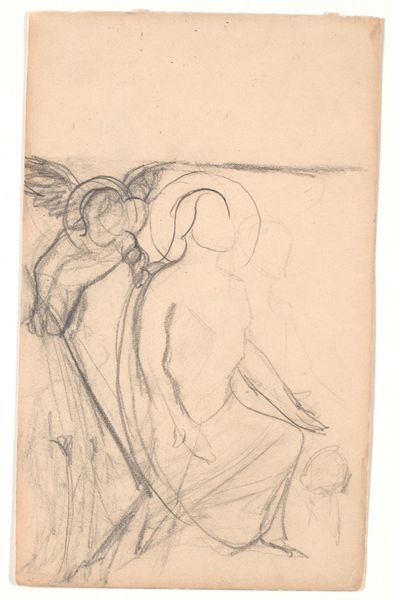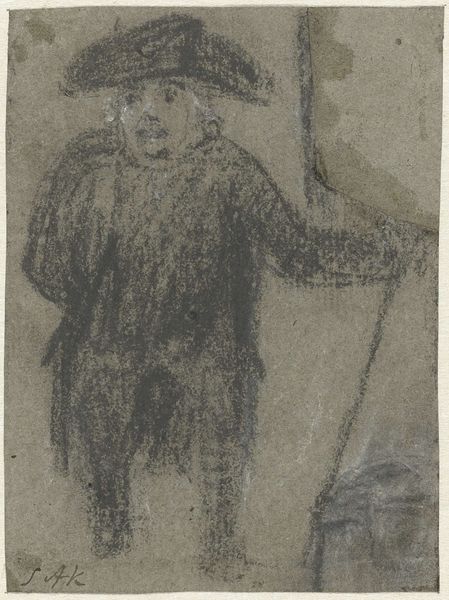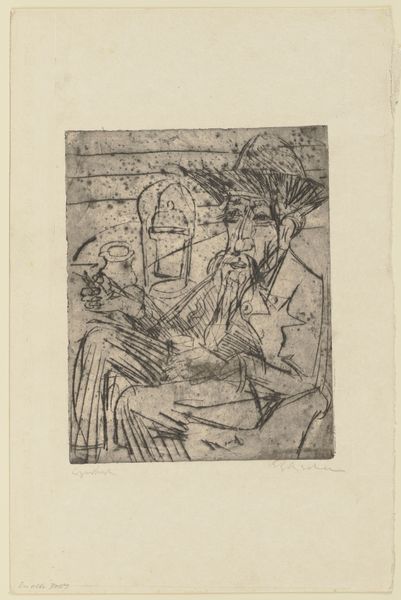
drawing, print, ink, pen
#
portrait
#
drawing
#
ink drawing
# print
#
pen sketch
#
figuration
#
ink
#
group-portraits
#
pen
#
post-impressionism
Copyright: National Gallery of Art: CC0 1.0
Here is Gauguin’s sketch of Three Tahitians, a preliminary study in charcoal for his painting "La soeur de charite". The figures, adorned with hats, bear the weight of a bygone colonial imposition. Hats, symbols of civilization and authority, are displaced here, imbued with a peculiar ambivalence. Consider how head coverings appear in iconography across time and place. Veils, turbans, and crowns—they demarcate status and identity, transforming the wearer. But here, in Gauguin's rendering, the hats seem almost like foreign objects, awkwardly placed atop the heads of the Tahitians. This motif, as it resurfaces here, tells a story of cultural exchange and its discontents. The gesture of one figure resting his head upon his hand reminds me of melancholic figures in classical art. These poses, recurring through the ages, evoke introspective states, hinting at the emotional weight of the colonial encounter. As we delve deeper, we perceive how collective memory informs the creation and reception of such images. The hats, the poses—they weave a complex tapestry of cultural memory, bearing witness to the cyclical, non-linear progression of symbols.
Comments
No comments
Be the first to comment and join the conversation on the ultimate creative platform.
